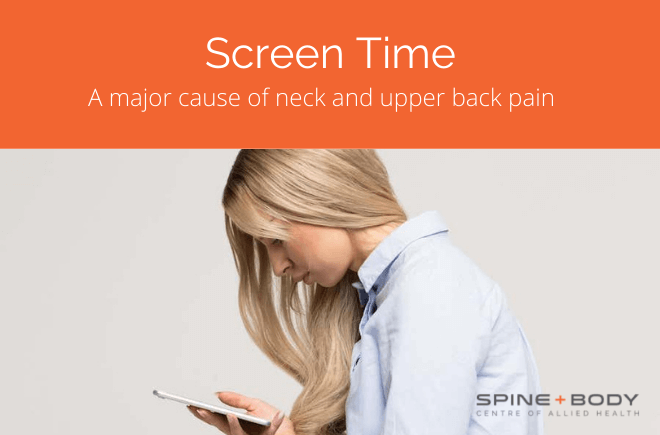Scoliosis – why early detection is essential

By Peter Georgilopoulos, APA Sports Physiotherapist, Spine + Body Gold Coast.
There are a number of uniquely juvenile and adolescent musculoskeletal conditions that parents and coaches need to be aware of as primary contact people. Early detection and correct management is integral in limiting pain, dysfunction and possible permanent deformation.
Scoliosis is a one of many such conditions that can appear as one of several specific developmental spinal presentations characterised by a particular deviation or abnormal curvature of the spine. It differs from” Kyphosis” which describes an excessive slumped or forward curvature usually between the shoulder blades or “Lordosis” which relates to an excessive curvature of the lower back or neck posture.
Scoliosis is somewhat more complex than either of these other two conditions in that it occurs over three planes of movement. There is a very obvious postural deviation away from the midline which may not be particularly obvious in standing [especially in low level degrees of deviation] but which is evident when the child bends forward to touch the toes. This is in fact the diagnostic test used to confirm the presence of a “structural” scoliosis as compared to a “functional” scoliosis. Other observable differences may be that the shoulders are uneven, the head may deviate marginally to one side, the height of the hips may be asymmetrical and, in cases of significant deviation, the ribs may protrude on the anterior chest wall on one side.
To an untrained eye, any deviation raises concern, however it is important to differentiate between “structural” and “functional “scoliosis. Commonly, acute spinal pain is accompanied by protective muscle spasm of supporting muscles for the duration of the presentation which resolves once the pain has subsided and this is known as “functional scoliosis”. Visibly, this appears similar to a structural scoliosis in the erect posture but disappears when the subject bends forward. In other words, the height and curvature of the left and right sides of the back appear symmetrical when viewed from the rear which tells us that the appearance of a scoliosis in this case is transient and will disappear once the acute back pain resolves. By contrast, a “structural “scoliosis is defined by the presence of asymmetrical contour between the left and right side of the back and mid thoracic region when viewed from behind as the child bends forward towards the toes.
The obvious deviation is usually the most visually evident, namely the asymmetry away from the mid line. There are however, two other deviations that occur in scoliosis which may be less visible initially that often result in considerable malformation to the spine and the trunk as a whole – a flattening of the natural curvature between the shoulder blades and an axial or rotational deviation occurring at one or more vertebral segments. The axial or rotational deviation is particularly implicated as the most debilitating cause of structural malformation and may significantly alter the weight distribution throughout the sequential spinal weight bearing joints known as facet joints leading to back or upper limb pain. Asymmetrical loading between the upper limbs and altered biomechanics of either shoulder can lead to repetitive rotator cuff pathology and in severe cases may lead to a reduction in vital capacity [ the volume of air that can be inspired per breath] if the deformity is significant.
How common is scoliosis?
Estimates suggest that scoliosis may present in approximately 3% of all children. There appears to be a slightly higher incidence of scoliosis amongst girls than boys and up to 90 % of cases appear between the ages of 11-18 years.
What causes scoliosis?
Aside from congenital [birth] spinal deformation usually linked to other acquired conditions, deformations linked to severe neurological presentations or senior onset deformations due to weakening of bones [osteoporosis] which in total are the exception rather than the rule, the majority of cases appear as part of the growth process through the adolescent years.
There is no definitive evidence based conclusion as to why these cases emerge although it would be fair to surmise that perhaps the growth process itself may be at the core of this problem. It may well be that asymmetrical growth of one side of the vertebral body leads to a slanted growth of one or more spinal sections which then creates postural deviation exacerbated by further growth. Structural leg length discrepancy can also initiate scoliosis by virtue of uneven pelvic stance.
How is scoliosis measured and can something be done about it?
A simple diagnostic test is to ask the child to bend forward and assess the symmetry of the left and right sides of the back from behind. The criteria for determining the severity of a scoliosis is based on the Cobb Method in which the angle of the top and bottom mal-aligned vertebra are measured on an X-ray image and the two angles combined. A combined angle of 10 degrees is considered a minor scoliosis whereas any angle greater than 25 degrees is considered significant. An angle greater than 45-50 degrees may require surgical correction. A particularly useful investigative procedure is an EOS scan which provides a standing, low radiation X-ray image of the entire body allowing accurate measurements of leg length, pelvic and spinal angles.
Regularly measuring growth spurts and undertaking the Adam’s Forward Bend Test with the feet together and bending 90 degrees at the waist can detect emerging problems.
Book your appointment with Peter Georgilopoulos at Spine + Body.
Peter is Director and Founder of Spine + Body Centre of Allied Health on the Gold Coast ph: 07 5531 6422 or contact us by email here.





